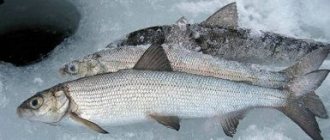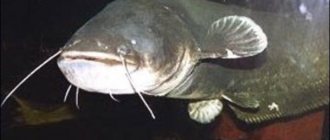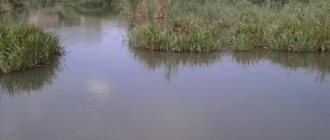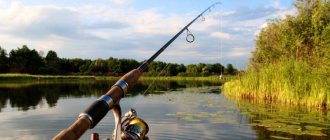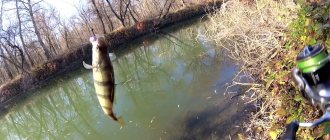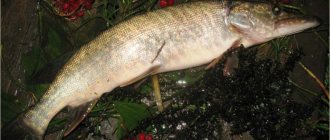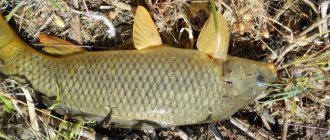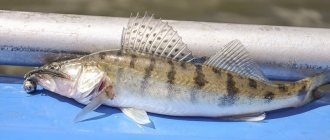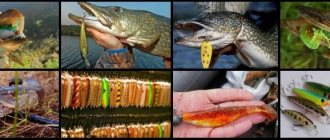Description of the whitefish family
According to generally accepted opinion, whitefish belongs to the salmon family, but many scientists classify it as its own group of whitefish, along with nelma and whitefish.
The appearance of the whitefish is notable for its flattened body, which is protected by medium-sized scales, a distinctive feature is a small mouth with missing teeth on the vomer and upper jaw. In other areas, the teeth are extremely poorly developed and, over time, fall out completely.
There is another unusual feature. In whitefish, the upper jaw bone does not extend into the eye , and depending on the species and shape, the location of the mouth may differ, from the terminal to the typically lower.
Fish of these species are notable for their medium size, the standard length can reach half a meter, and the weight will be no more than one kilogram. The body is light in color with a slightly prominent darkish back and grayish belly.
Naturally, depending on the subspecies, the color intensity may vary slightly in one direction or another. The fins, on the contrary, always differ from the light body and have a dark, almost black color. It is worth noting that whitefish never have any spots on their fins or body.
Whitefish meat, even if most researchers classify it as a member of the salmon family (red fish), is white. It is noteworthy that it is distinguished by its tenderness and amazing taste.
By the way, in addition to everything else, it contains many vitamins, a significant amount of protein, and extremely important substances for the body, such as fluorine, nickel, chromium, malibdenum and zinc. Well, it’s not even worth mentioning about the excellent nutritional value and satiety.
The growth rate of fish directly depends on the temperature of the water, the oxygen it contains and the amount of suitable food. Whitefish feed on plankton, and as they grow, their diet includes fry and small fish.
Winter bait and groundbait for whitefish
Many types of bait, both natural and artificial, are suitable for winter fishing:
- mormysh;
- bloodworm;
- worm;
- bark beetle larva;
- maggot;
- silicone vibrotail.
It is believed that the best winter bait for whitefish is mormysh. This is a bait that will never leave a whitefish indifferent, and he will try to swallow it. Small whitefish are caught using bloodworms. Therefore, for such fishing it makes sense to use gray nymphs or amphipods. Millet mixed with aromatic substances works well as bait. This predator eats the eggs of other fish species, but using eggs as bait is not recommended. He does not take the caviar that is on the hook, as if he knows that now is not the season for it.
Complementary feeding rules
In winter, whitefish gather in schools and move around the reservoir in search of food items. Therefore, the main task is to get to the flock and make every effort to ensure that it remains for a long time in the fishing zone. To do this, bait is used, which is thrown into the hole in small portions to create a vertical cloud of turbidity, which may be attractive to whitefish. To make it look like a uniform column of food elements, the fisherman will have to work hard. But the result will not be long in coming, and the fisherman’s work will definitely be rewarded.
Good results can be obtained if you constantly change the bait supply mode, creating different throwing intervals. You can play with the nature of the bait. It is quite natural that such manipulations with bait create certain inconveniences. When throwing bait into the hole, nodding movements similar to a bite are observed. Sometimes, even an experienced fisherman finds it difficult to determine whether a bite is real or false.
If the fluctuations are repeated and very often, it means that the school of whitefish is rising to another level, which requires a revision of fishing tactics. To do this, you will have to switch to another fishing horizon, changing the fishing depth each time. This operation continues until the bait is in close proximity to the school.
Types of whitefish
Despite the fact that there are many types of whitefish, and at first glance it is not possible to organize this system, there is still a classification.
Whitefish are divided according to their habitat into three main types:
- Lake whitefish
- Passable whitefish
- River whitefish
The most common species is river whitefish. It comes to rivers from the seas and small lakes to spawn. Its distinctive feature is the darker color of the back and abdomen, as well as a small head with a blunt and rounded nose. The pelvic and pectoral fins are distinguished by pointed ends.
There is also a classification of whitefish depending on their place of residence:
- Pelagic
- Coastal
- deep sea
How do whitefish bite?
This fish bites quite sharply, the whitefish stands diagonally towards the bait and, lying on its side, grabs it, jerks it in, and drags it to the depths. The most reliable hooking of a whitefish occurs at the moment when there is active play with the float. And if we take into account that whitefish are a stubborn and strong fish, then fishing for whitefish in the summer will be more practical with two people, especially if you catch it from a boat, and mainly large specimens will bite. In this case, one of the anglers lands the fish, and the other removes it from the water with a landing net. You should also know that the whitefish is not only a strong and tenacious fighter, it is also very cunning. When the whitefish begins to be led to the shore, it can suddenly turn over on its back and sink to the bottom. During such a maneuver, the hook often simply shoots out of his mouth and remember what his name was. So, after hooking, this fish must be caught very carefully, otherwise the whitefish will simply scare away all the living creatures in the area with its noisy and sudden movements. But you shouldn’t delay fishing, this fish is very mobile and has “dry lips,” which allows the whitefish to easily free itself from the hook.
Habitat
Whitefish is a commercial fish species due to the fact that it is acclimatized in most of Russia and the rest of the post-Soviet space.
Particularly successful places for whitefish fishing are in the Gulf of Finland, Lakes Ladoga and Peipus, on the Kola Peninsula, where it mainly lives in large lakes such as Seydozero, Lovozero, Pankunyavr, etc. Whitefish are widespread between the Barents and White Seas and up to Chukotka.
It is found in the Baltic Sea, but in Transbaikalia there is an extremely amazing whitefish, identified as a special species. Its uniqueness lies in the fact that it spawns in early spring . You can meet whitefish in the reservoirs of Alaska and Canada, less often in the seas and large lakes, where the whitefish waits out the cold.
Whitefish spawning
Regardless of the habitat and subspecies (with rare exceptions), whitefish spawning begins at 4-5 years of the life cycle in males and 5-6 years in females . The beginning falls in the autumn, while spawning extends and often includes the winter months. This is primarily due to the length of the reservoirs where whitefish go to spawn.
The fact that in whitefish habitats there is a fairly long autumn and cold weather comes late also plays a role. If we indicate the timing more specifically, then the beginning falls in mid-September, and ends in November or December, the decisive factor here is the type of reservoir. For spawning, whitefish prefer shallow reservoirs, which is why whitefish leave the seas and large lakes for spawning and come to the river environment.
Comfortable water temperature for whitefish spawning will range from plus five to plus two degrees. Adults feed in shallow water, but in some cases whitefish can go to deep places, up to twenty meters. The fertility of females ranges from twenty thousand eggs, up to fifty thousand in some species.
The color of the caviar is slightly lighter than that of trout. Its whitefish preferentially target rocky areas.
What you need for fishing
This tasty fish is found in almost all lakes and rivers of Siberia, the Far East and Primorye. Fishing places are reservoirs, rivers, lakes, where it is often bred artificially.
First of all, you need to take care of the equipment before you go fishing. As a rule, in the summer, the fly fishing method or a float rod in the wiring is used for this. However, according to experienced fishermen, the most convenient way is to catch whitefish using a spinning rod.
In this case, you need to take into account a number of features:
- Whitefish is a fairly active fish and often resists more than grayling. Therefore, a thin cord may not cope with this task.
- The most suitable is a thin PE cord. It is most often used for perch.
- An inexperienced fisherman should not use a fishing rod at first, since with fairly heavy baits (about 2 grams) it can be difficult to ensure a quality cast.
- It is more convenient to work with a thin cord, since it ensures that the bait is cast to the required distance. In addition, it allows you to control the wiring and practically does not sail.
More experienced fishermen use spinning rods, for example, “rockfish”, which show up to 3 grams in tests. At first glance, the rod is quite rigid, but in the case of northern fish it is very convenient and helps to observe the retrieve.
It is better to choose sports reels that are equipped with fine adjustment of the brake.
Of course, in order to successfully catch whitefish you will need good bait. According to experienced anglers, the Lazer Rocker Minnow is currently considered one of the best. It is an artificial worm made of silicone. If you don’t have one at hand, then a spinner that resembles a narrow spoon, onto the end of which you can attach several artificial worms, is quite suitable.
We throw the bait to the bottom, and then move it several times so that the whitefish sees the cloud of turbidity. Sometimes the fish does not want to attack, but watches the bait. In this case, it is lifted up, after which the fish immediately reacts.
Whitefish fishing
If we talk about commercial fishing for whitefish, it is carried out in reservoirs specially equipped for this purpose, where it is artificially reared.
The main whitefish fishing season occurs in the summer , when the fish are in search of food; whitefish can be especially often found in holes where there is a reverse current and on riffles in warm weather. Whitefish fry often live under high banks, where they unite in schools and stand under the coastline.
In turn, adults and large individuals opt for deeper places. For the winter, whitefish remain overwintering in deep holes, and for successful fishing you just need to find such a hole.
The most effective fishing period is considered to be fishing at the moment of the last ice, i.e. actually already in the spring. In this, by the way, whitefish has similarities with its brother – grayling. After the water is again enriched with oxygen, the whitefish begins an active search for food in order to gain fat lost over the winter.
It is worth remembering that due to its high fat content, whitefish, like grayling, are classified as highly perishable fish, therefore, after catching, you should either prepare to eat the fish, or salt and smoke it.
Whitefish fishing gear
You can catch whitefish using absolutely any tackle, because... in this regard, it is a very careless fish. However, some features are still worth considering. The telescope of the fishing rod should be about three meters long and be strong enough. The reel should be selected for landing large fish.
When using a classic float fishing rod, the depth of the fishing spot should not exceed three and a half meters. In other cases, it would be much more appropriate to use sliding float technology.
Lures for catching whitefish
In the natural environment of a reservoir, whitefish behave very aggressively, and often displace other fish species from their usual habitat, so catching whitefish is possible with live bait, and in general, whitefish can often be found in the habitats of fry or any small fish. In winter, by the way, it turns out to be successful in catching whitefish with a worm and fry.
Whitefish fishing.
Lures for catching whitefish.
Whitefish do not stop feeding even in winter. Its natural food is bleak, gudgeon, rudd, perch and other fish with a narrow body. It is best to use fish up to 2 cm in diameter and about 6-8 cm long as bait. Whitefish loves light colors of bait, since in nature this color is more familiar to it.
In other bodies of water it can only be caught with gudgeons or similar baits. Can often be caught on dead fish or pieces of larger ones. Dung and earthworms are only suitable for early spring, or catching juvenile whitefish. In some European countries, fishermen use crab meat, freshwater mussels and freshwater shrimp for bait.
In river whitefish fishing, the best bait is still the classic jig head with a round shape. Usually compact heads are chosen, thanks to which the play of fish or silicone baits looks more lively. Some of the best lure colors for whitefish fishing are combinations of reflective orange and shades of beige-yellow.
Fishing for whitefish in the river.
There are probably no fishermen who do not prefer to catch whitefish over other predators. It's no secret that a large number of whitefish are caught in the net. For real fishermen, this is poaching. A real fisherman always prefers classical methods, in which the pleasure of fishing is irreplaceable. Whitefish spend most of the year in the lower parts of deep areas on rivers and lakes, especially near dams, so it is important to know how to catch and where to catch large whitefish.
Correct choice of depth.
To know the required depth, you need to know approximately the places where fish gather, where they gather in schools to feed. With a channel depth of up to 20 meters, bait placement must be done at a depth of 3.5 meters. The total depth is up to 10 m, wiring is carried out from 5 to 2.5 m. For night fishing for whitefish or during spawning, i.e. in April and May from 2.5 to 3.5 m - for summer fishing for whitefish in areas of dams, locks and other hydraulic structures.
For most rivers with an average depth of 6 meters, including in winter. From 3.5 to 6.5 m - for reservoirs in summer and early autumn. For most rivers with an average depth of 10-12 meters. From 6.5 to 11 meters - in early spring and late autumn. From 11 to 19.5 meters - for late autumn and winter in rivers with a maximum depth of 30 meters or more. Most often, whitefish, with the exception of juveniles, are found in a school at the same depth. In rare cases, whitefish may be at different depths, which also needs to be taken into account. If you find that the fish are at a depth of 6.5 m, for example, you need to study the irregularities at that depth. Fishing can be successful at depths above and below 6.5 meters.
Water level and transparency.
If the water level rises significantly and the bank is slightly flooded, it is not a good time to catch whitefish. Consistently low levels in the river lead to high productivity in the hunt for large whitefish. If the water level in one river is lower than in others, it makes sense to catch whitefish in it. In spring and early summer, whitefish migration is literally subject to a certain level of the river or lake.
If you know approximately where the fish are coming in at a certain level, you can always hunt for big trophy whitefish. In addition, there are lakes and areas of reservoirs in which fish react to changing levels. For example, after heavy rains, most whitefish appear below dams on rivers. You should not pay much attention to the transparency of the water. In spring and in muddy water, catching whitefish is just as important as in clear water.
Whitefish fishing season and water temperature.
Whitefish are caught 12 months a year. There are known cases of good biting in February and December. So, understanding the best time to catch fish is not worth it. Whitefish are known to be most active in mid-October, but different regions may have a different month. Only if you have experience can you be in the right place at the right time. The activity of white fish can be seen in three examples: where the bites occur, the average size of the fish caught and the trophy catch. One might even assume that big whitefish are easier to spot on the river.
This fish prefers a hard bottom, but sometimes whitefish feel good in places with a muddy bottom. Type of bottom soil: clay, stone or sand? In some special cases, whitefish prefer soil that is less abundant in the basin area. For example, if the river bottom is mostly sand, it will stick around a clay patch or near a rock. The underwater terrain preferred by the predator, especially whitefish, is exclusively underwater hills, bends and folds of the bottom. But whitefish are also successfully caught in areas with a relatively flat bottom.
The importance of underwater vegetation for whitefish.
If the bottom has thickets of grass or algae, at any depth, whitefish are unlikely to be caught. This is possible only in April-May, during spawning. In such places, most likely you will catch pike. And where pike live, whitefish avoid such places. Typically, grass and algae are not found near bridges, power plants, or similar areas. At the mouths of rivers, streams, reservoirs, before the narrowing and widening of the river, in places where the river is artificially widened, near islands in the middle of the river.
Schools of bream are a clear sign that there are whitefish in the pool. In some reservoirs, carp can be a companion to whitefish. In autumn, winter and spring, trophy specimens of whitefish were caught when fishing for carp, bream, pike and pike perch. Whitefish easily gets along with other large peaceful fish. Large individuals of different species easily get used to each other.
Fishing tackle for whitefish.
To catch whitefish, we need a reliable telescope of 3-4 meters, with a test of 40-80 grams. The reel is meant to be a middle class one for catching large fish. It is best to use braid with a thickness of up to 0.20. The fiber strength, however, should not be less than 4-5 kg.
The length of the leash should not be closer than 50-60 cm from the sinker. Hook if single - No. 4 - No. 2, if double - from No. 8 to No. 4. For triplets, much smaller numbers.
When fishing with a float rod, using a classic float setup is only suitable when fishing for whitefish at a depth of up to 3.5 m. The advantage is obvious when using a lightweight float with a small antenna and a small body. This dulls the predator's vigilance.
For deeper areas and a more versatile approach is to install a sliding float. Here we put the leash and install a carabiner for quickly replacing the float if necessary. Place the upper limiter in the place where we want our system to fish only the selected layer. Thus, our bait does not fall to the bottom, and can be close to it, or more vertical.
